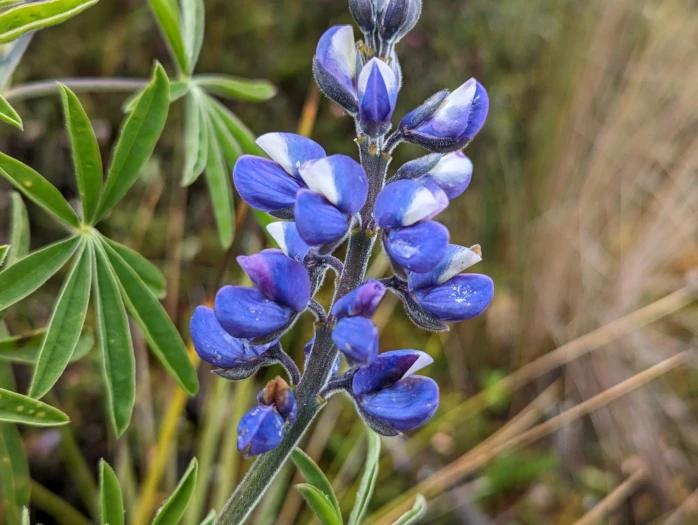Andean Lupin
(Lupinus mutabilis)
Andean Lupin (Lupinus mutabilis)
/
/

© Attila Oláh
CC BY 4.0
Image By:
© Attila Oláh
Recorded By:
Copyright:
CC BY 4.0
Copyright Notice:
Photo by: © Attila Oláh | License Type: CC BY 4.0 | License URL: http://creativecommons.org/licenses/by/4.0/ | Uploader: attilaolah | Publisher: iNaturalist |

















Estimated Native Range
Climate Requirements for Auburn, Alabama
| This Plant | Your Site | Plant Suitability for Your Location | ||
|---|---|---|---|---|
| • Precipitation | 1" - 115" | 57" | Aquatic | Aquatic |
| • High Temp. | 51°F - 90°F | 91°F | Your summers may be too hot for this plant. | Too hot |
| • Low Temp. | 9°F - 70°F | 34°F | Your winter temperatures are normal for this plant | Excellent |
This plant may not grow well at your location - your precipitation is too high.
Summary
Lupinus mutabilis, commonly known as the Andean lupin or tarwi, is an annual herbaceous plant native to the high Andean regions of Ecuador, Peru, and Bolivia. It thrives in cool climates at altitudes ranging from 2625 to 9843 feet, where it is often found in disturbed sites and cultivated fields. This species can grow up to 9 feet tall, with distinctive palmate leaves and spires of blue to white flowers that bloom in the summer months. The flowers are moderately showy and attract pollinators. The seeds, known for their high protein and oil content, are encased in pods and must be processed to remove bitter alkaloids before consumption.
The Andean lupin is valued for its edible seeds, which have been a staple food in the Andean diet for over 1500 years. It is also recognized for its ability to fix nitrogen in the soil, making it beneficial for crop rotation and improving soil health. In cultivation, it prefers well-drained soils and can tolerate poor soil conditions. While it requires regular watering, it is important not to overwater, as it is susceptible to root rot. Full sun to partial shade is ideal for optimal growth. The Andean lupin is not commonly found in ornamental horticulture but is gaining attention for its potential in sustainable agriculture and as a plant-based protein source.CC BY-SA 4.0
The Andean lupin is valued for its edible seeds, which have been a staple food in the Andean diet for over 1500 years. It is also recognized for its ability to fix nitrogen in the soil, making it beneficial for crop rotation and improving soil health. In cultivation, it prefers well-drained soils and can tolerate poor soil conditions. While it requires regular watering, it is important not to overwater, as it is susceptible to root rot. Full sun to partial shade is ideal for optimal growth. The Andean lupin is not commonly found in ornamental horticulture but is gaining attention for its potential in sustainable agriculture and as a plant-based protein source.CC BY-SA 4.0
Plant Description
- Plant Type: Herb
- Height: 1.5-4 feet
- Width: 1-2 feet
- Growth Rate: Moderate
- Flower Color: Blue, White
- Flowering Season: Summer
- Leaf Retention:
Growth Requirements
- Sun: Full Sun
- Water: Medium
- Drainage: Medium, Fast
Common Uses
Bee Garden, Bird Garden, Edible*Disclaimer: Easyscape's listed plant edibility is for informational use. Always verify the safety and proper identification of any plant before consumption., Low Maintenance
Natural Habitat
High Andean regions, disturbed sites, and cultivated fields
Other Names
Common Names: Tarwi, South American Lupin, Altramuz, Lupino-Mutável, Pearl Lupin, Pearl Lupine, Andean Lupin, Tarhui
Scientific Names: Lupinus mutabilis, Lupinus cruckshanksii, Lupinus mutabilis, Lupinus mutabilis f. cruckshanksii, Lupinus mutabilis f. variicolor, Lupinus mutabilis var. cruckshanksii, Lupinus mutabilis var. mutabilis, Lupinus mutabilis var. roseus
GBIF Accepted Name: Lupinus mutabilis